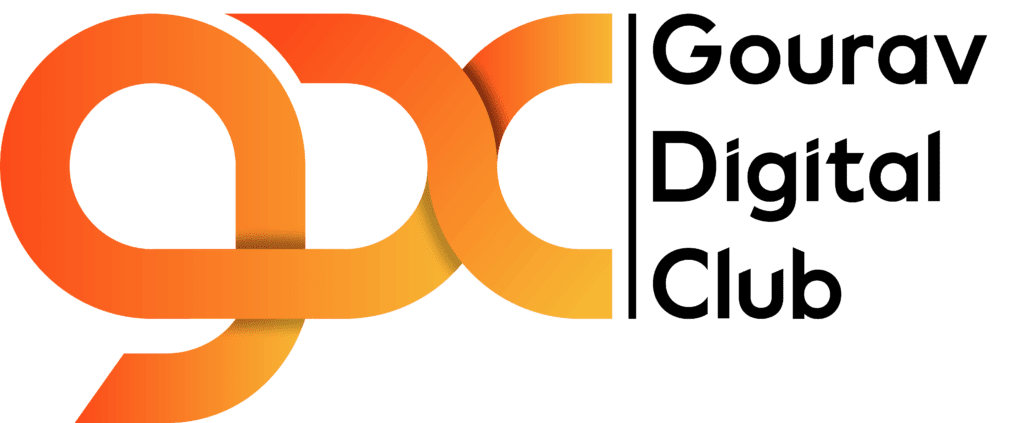Table of Contents
ToggleAccording to Content Marketing Institute, “ It is a marketing technique of creating and distributing valuable, relevant and consistent content to attract and acquire a clearly defined audience – with the objective of driving profitable customer action.”
Some impressive statistics of content marketing
- Content marketing provides conversion rates about 6 times higher than other digital marketing methods. (ABG Essentials)
- Video content can help provide a great ROI and significantly increase conversions, according to 72% of businesses surveyed. (CrazyEgg)
- After reading recommendations on a blog, 61% of online consumers in the U.S. then decided to make a purchase.
- According to 74% of companies surveyed, content marketing has increased their marketing leads, both in quantity and quality. (Curata)
- Inbound marketers are able to double the average site conversion rate (from 6 to 12%), in part due to their content marketing efforts. (HubSpot)
Why do businesses choose content marketing?
It is very much important to understand why businesses exactly choose content marketing and for that, we need to go first through the marketing buying cycle to understand the main motto of content marketing:
- Awareness: Your customer could have a need but he doesn’t know what its solution really is. So that is why awareness is important when you are a small business or launching a new product.
- Research: Once the customer is fully aware that there is a solution, they will start researching to educate themselves.
- Consideration: Now at this point the customer starts comparing different products from multiple sources to make sure that they’re getting a high-quality product at a reasonable price.
- Buy: In the last step, the customer makes their final decision and moves forward and completes the transaction, and makes a purchase.
What is the difference between content and content marketing?
Content Marketing: Content Marketing is basically all about attracting a type of targeted audience to provide them an experience or a destination that you own, build, and optimize to achieve the objective of your marketing.
Content: Content is just everywhere, especially on the internet from products to advertising everything has content.
Using content marketing you are attracting a bunch of audience to a brand-owned destination versus interrupting or buying an audience on someone else’s platform.
Major Components of Content Marketing
- Blog posts
- Case studies
- Demos
- E-Books
- Workbooks and templates
- White papers and reports
- Video
- Cheat sheets
- Info-graphic
- Slide decks
What are the benefits of Content Marketing?
- Content marketing is said to be the best method of reaching your target audience by offering them relevant, engaging, personalized, and quality content.
- It helps you to improve your content and website.
- It also enables you to transmit your brand’s values.
- Content marketing is very much helpful for attracting and retaining potential clients on Social Networks.
- Creating relevant articles and content for your audience increases your chances of appearing on the first page of the Google Search Result Page (SERP).
What are the common problems that can be solved through Content Marketing?
- No engaging content: Content marketing helps you provide valuable stuff to your audience which will ultimately let them engage and buy from you.
- Low organic search: As we all know audience can’t buy from you if they are not able to find you.
To deal with this problem, marketing help you to build organic and reputed brand awareness because you started by delivering highly engaging and valuable content, your content will start getting ranked in top searches of Google, or it will start getting shared on social media platforms.
- No brand preference: As your content is now engaging and valuable, it will create a strong bond and relation of you with your audience as they will start trusting you for information and education purposes and the chance of people from your business will increase automatically.
What Your Content Marketing strategy should include?
- Goals
- Success metrics
- KPIs
- Target audience
- Content strategy
- Reporting framework
- Distribution strategy
- Measurement framework
How to design Content Marketing?
- Firstly understand your main marketing objective.
- Try to understand your audience by taking leverage from social influencers.
- Define your goals and metrics.
- Put your content in front of a small audience like your team members
- Observe how your audience interacts with your content
- Then improve accordingly.
- As more often you feed these observations back into your content, the more likely you will be able to meet the needs of your audience.
- In the last Publish, as you have implemented what works. Now, execute your plan to the fullest, now keep learning, observing, and improving!A to Z Guide; How To Start A Blog In India | Pro Blogging Tips
Lenovo Content Marketing Case Studies
As we know, Lenovo is world’s one of the largest and leading computer hardware manufacturers.
Lenovo’s marketing team made an excellent content marketing strategy, in which they first started creating brand awareness at a large scale among their audience and this leads to results in building trust among the audience. (main their targeted audience was IT professionals)
The main aim of this Lenovo Marketing was to help their targeted audience be informed before taking any buying decisions and to keep Lenovo at the top-of-mind recall while making those decisions.
They started creating engaging and informative content to educate their targeted audience by distributing their valuable content across all the major social channels.
To execute this marketing strategy, Lenovo developed a digital content hub called “Tech Revolution” to deliver all the major technology news and technology information to IT decision-makers across the Asia Pacific region.
This marketing strategy leads Lenovo to engage and connect with its target audience successfully.
The marketing strategy of Lenovo was hugely successful as the digital content hub had more than 250 articles with 34 million impressions, and 308 link clicks and was visited by approximately 1,70,000 new web users.
In terms of revenue, $300 million in sales was attributable to this initiative alone.
Conclusion
We hope that this guide will help you clear all your major and minor doubts regarding the question: “what is content marketing?”
As we all know “Rome was Not Built in a Day”, similarly Content Marketing definitely takes some time to get a kick start.
But when it does, you can find that your site will start getting more traffic, leads, as well as customers, and that, is why it is a very popular marketing channel.
So start from the basics on day one and only focus on creating that piece of content that easily connect with your audience and then make sure that you remain consistent with that type of content.
You, once you master all the major fundamentals of content marketing, then start experimenting with SEO and new content formats for better and improved results.
Link Slot Gacor Malam Ini: Auto Cuan dan Maxwin Resmi 2025!
Tahun 2025 bener-bener jadi surganya para pecinta slot online di Indonesia. Sekarang, banyak banget link resmi dari bolaklik.cfd yang ngasih peluang menang lebih gampang dan hadiah makin gede. Dari pemain yang baru coba sampai yang udah senior banget, semuanya bisa ngerasain serunya menang terus alias auto maxwin tiap main sejoli76.sbs!
Kita bakal ngebahas lengkap tentang tren slot gacor malam ini, strategi cuan, situs asiabet.bid terpercaya, sampai kabar-kabar viral Indonesia yang lagi hangat dibahas dan nyambung ke dunia slot. Siap? Yuk kita bahas satu-satu!
1. Slot Gacor Itu Apaan Sih?
Buat yang masih asing, slot gacor itu sebutan buat game slot online koi288.link yang lagi sering kasih jackpot. Istilah ini berasal dari kata “gacor” yang biasanya dipake buat burung yang cerewet dan suaranya keluar terus. Jadi kalau dibilang game slot bet138.sbs lagi gacor, itu artinya lagi bagus-bagusnya buat dimainkan.
Beberapa ciri khas slot gacor di tahun 2025:
- RTP Tinggi: Return to Player agentotoplay.cc di atas 97% bikin peluang menang makin besar.
- Tampilan Simpel: Gampang dimainin bahkan buat yang baru coba.
- Tema Menarik: Dari horor, budaya Asia, sampai tema alam tersedia semuanya di wak5000.link.
- Live Chat CS Aktif: Bantuan 24 jam siap bantu kapanpun lo butuh.
- Transaksi Kilat: Deposit dan withdraw sawit188.link cepet banget prosesnya.
2. Situs Slot Gacor Terbaik Tahun Ini
Kalau lo mau nyobain langsung main slot kaisar303.top yang gacor, berikut ini beberapa situs yang lagi booming banget di tahun 2025:
MAK777
Situs vipgacor.sbs terkenal banget karena RTP-nya tinggi dan sering kasih maxwin. Mereka juga udah punya lisensi resmi dari lembaga luar negeri, jadi lo bisa main tanpa was-was.
Rajapanen
Rajapanen punya koleksi slot online yang super lengkap. Mulai dari slot klasik sampai slot modern semuanya ada di pt777.link. Banyak pemain lama yang bilang kalau main di sini sensasinya beda!
Dewa Slot Gacor
Gabung bareng bikin situs kode4d makin mantap. Banyak promo menarik dan bonus yang ngasih tambahan modal buat lo spin lebih lama.
3. Tips Main Slot Biar Gampang Dapet Maxwin
Main slot kode4d.top bukan cuma soal keberuntungan, tapi juga perlu strategi yang jitu. Nih beberapa tips dari para pemain pro:
- Pilih Game yang Lagi Hot: Ikutin rekomendasi dari komunitas yang update terus soal slot gacor molaplay.cc terbaru.
- Atur Modal: Jangan pernah pake uang makan atau kebutuhan pokok buat main slot. Pakai uang hiburan aja dan dapatkan cashback di surgabet288.
- Main di Jam Sepi: Banyak yang percaya kalau main rp777.link tengah malam sampai pagi bisa lebih gampang dapet bonus dan free spin.
- Manfaatkan Bonus: Jangan malu ambil bonus new member tebaknomor.cfd, cashback, dan lainnya. Itu bisa jadi modal tambahan buat menang gede.
- Pahami Simbol dan Pola: Setiap game slot koibet4d.sbs punya ritme sendiri. Jangan asal spin tanpa ngerti aturan mainnya.
4. Berita Viral Indonesia: Nyambung Sama Dunia Slot?
Seru juga kalau kita nyambungin dunia slot online ole777.top dengan kabar yang lagi viral di Indonesia tahun ini. Ternyata banyak juga loh keterkaitannya!
Raja Ampat Diselamatkan
Presiden Prabowo cabut izin tambang nikel di Raja Ampat karena wilayah itu rawan rusak. Banyak yang dukung langkah ini, terutama komunitas lingkungan. Nah, beberapa slot surga55.top sekarang juga punya tema lingkungan dan keberlanjutan, jadi bukan cuma main tapi juga ada pesan moralnya.
Stimulus Ekonomi Bantu Warga
Pemerintah ngeluarin paket stimulus buat bantu rakyat hadapi ekonomi yang lesu. Salah satu efeknya? Masyarakat jadi punya uang lebih buat hiburan, termasuk main slot online kilat69.sbs. Jadi game digital makin booming di 2025.
Strategi Politik Prabowo
Presiden juga sempat jadi buah bibir karena nolak undangan G7 dan malah komunikasi sama Donald Trump. Langkah yang unik dan nggak terduga ini mirip sama gaya main slot nagawin: kadang strategi beda justru bawa hasil besar.
5. Slot Online = Hiburan Digital Masa Kini
Dengan akses internet yang makin luas, hiburan digital makin digemari. Slot online lgo4d jadi salah satu yang paling digemari karena gampang diakses dan seru banget buat dimainkan kapanpun dimanapun.
Kenapa slot makin populer?
- game slot ulti700 bisa dimainkan dari HP, tablet, atau laptop.
- Grafis dan animasi makin keren.
- Disitus slot858.sbs sering ada turnamen dengan hadiah jutaan rupiah.
- Bisa sambil ngobrol via chat dalam game slot warungplay.
6. Tetap Main dengan Tanggung Jawab
Seru-seru main slot https://arusjitu.bz/, tapi jangan sampe kebablasan. Yang penting tetap sadar diri dan main dengan bijak.
Cara main sehat ala anak muda 2025:
- Main slot judislot888 hanya saat waktu luang, bukan di jam kerja.
- Kalau kalah, jangan langsung emosian. Tarik napas, istirahat dulu.
- Jangan jadikan slot sebagai penghasilan utama.
- Kalau ngerasa kecanduan, stop dan cari bantuan profesional.
7. Slot Online: Hobi, Hiburan, atau Gaya Hidup?
Buat banyak orang, user gacor online udah jadi bagian dari gaya hidup. Tapi ingat, yang penting lo tau batasannya. Main boleh, tapi harus tetap kontrol dan tahu kapan waktunya berhenti. Anggap aja sebagai hiburan yang bisa bikin happy, bukan jadi beban hidup.
8. Siap Gaskeun Slot Malam Ini?
Tahun 2025 benar-benar jadi titik emas buat dunia online user slot. Teknologi canggih, pilihan game beragam, dan peluang menang yang lebih besar bikin semuanya makin asyik. Tapi yang terpenting tetap: tanggung jawab itu nomor satu!
Yuk cobain peruntungan lo malam ini! Cari link daftar slot online gacor yang terpercaya, siapin modal yang pas, dan main pake strategi. Siapa tau malam ini lo dapet maxwin pertama lo!











